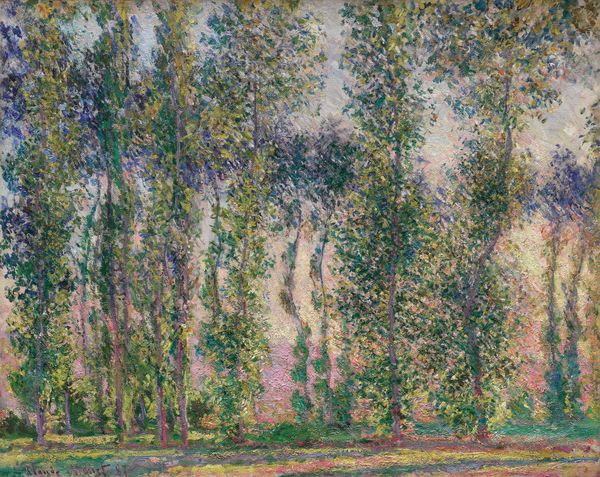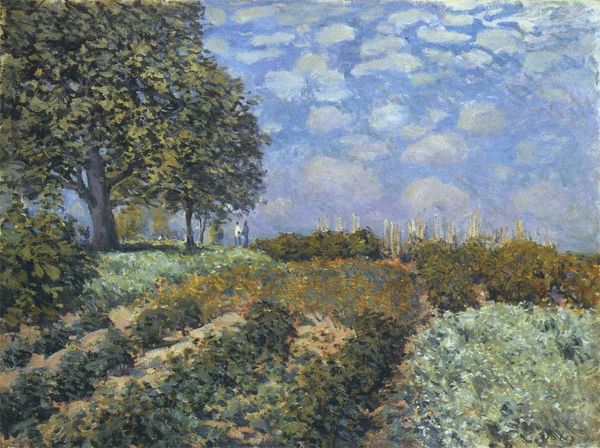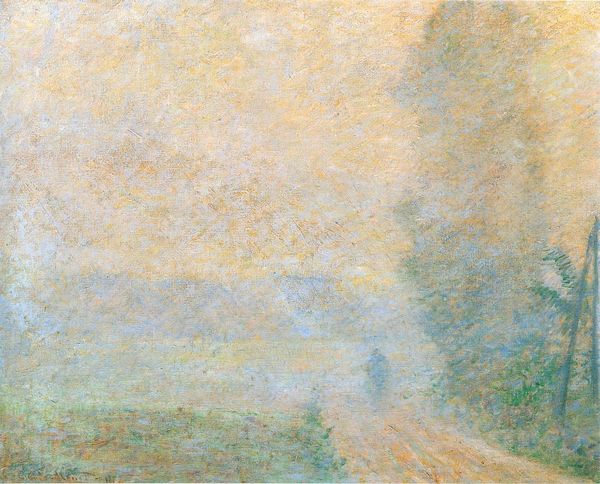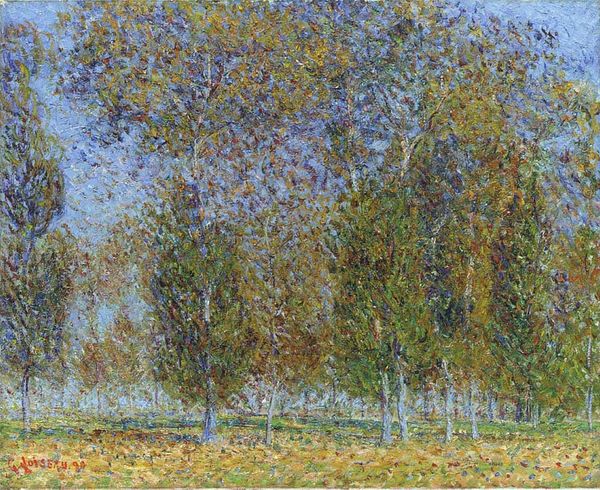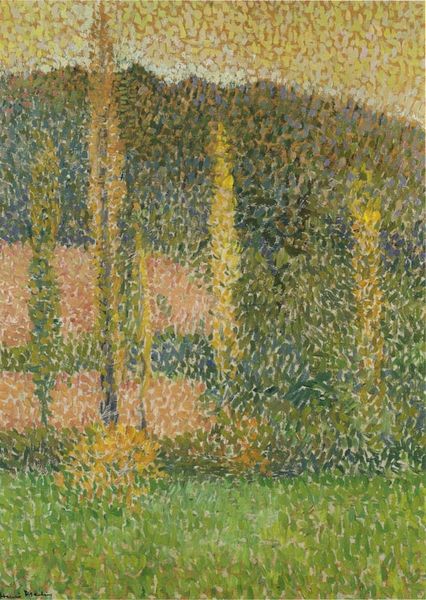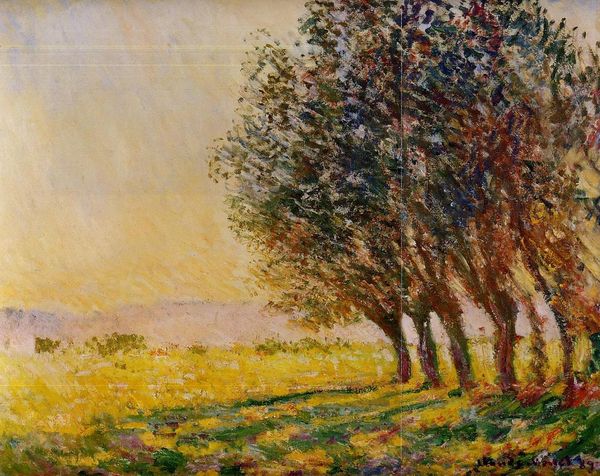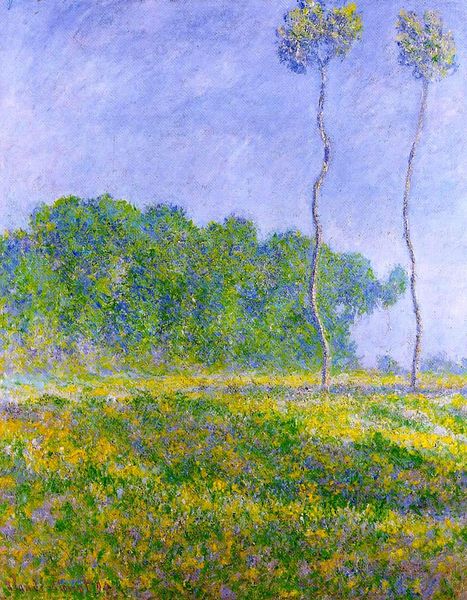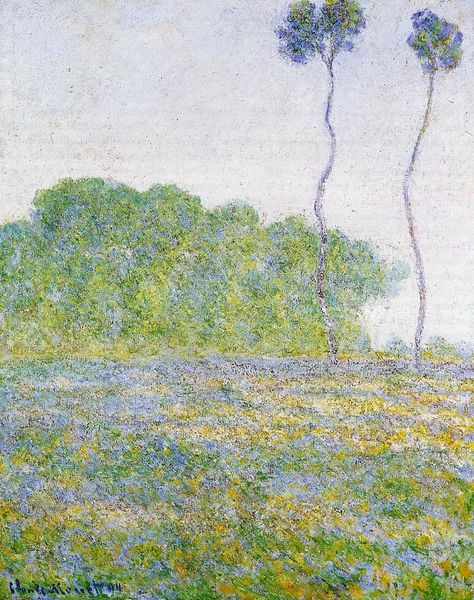
painting, plein-air, oil-paint, impasto
#
tree
#
painting
#
impressionism
#
grass
#
plein-air
#
oil-paint
#
landscape
#
flower
#
impressionist landscape
#
nature
#
impasto
#
plant
#
post-impressionism
Copyright: Public domain
Curator: This is Claude Monet’s "Morning Landscape, Giverny," painted in 1888. You can see the textures inherent in the medium of oil on canvas, further enhanced by the plein-air technique, something Monet frequently used in his process. Editor: It's beautiful. It has a hazy quality, a tranquility. I almost feel like I could step right into it, onto that path. But that same path has this snaking characteristic that hints towards the disquiet felt from an encroaching modern life. Curator: Absolutely. Monet’s impressionistic style emphasizes the subjective experience of light and color, breaking away from traditional academic realism. His work here is as much about documenting a particular place as it is about exploring the fleeting effects of light and atmosphere. And, indeed, Monet lived at Giverny at this time, after moving his large family to the countryside. Editor: Considering Monet's lifestyle, it feels tempting to categorize this painting as a commentary on class and leisure, considering that this subject matter comes from an experience of privilege. I am further intrigued that he captured this moment with an impasto layering technique with short brushstrokes to reveal the instability of bourgeois living. Curator: What an interesting and thought-provoking point, though this can also be contextualized by the availability of new art materials that encouraged outdoor experimentation, allowing Monet and his contemporaries to challenge the established Salon system that favored historical and mythological scenes. It's all intrinsically interconnected. Editor: It absolutely is. And viewing art as inherently political allows for continuous dialogue about societal structures. I think this artwork also shows an active rejection of depicting social exploitation that stems from France's colonial endeavors. What are we not seeing when gazing at this? Curator: You raise a vital question about what's excluded or centered in these visual representations of pastoral beauty. This points towards a wider institutional discourse about artistic representation. Editor: Exactly. So even as we appreciate its aesthetic qualities and innovations, we must be critical when interrogating the historical, social, and cultural contexts that birthed such artwork. I do wonder about this snaking road, as if beckoning us to enjoy this landscape while quietly hinting at the changing times. Curator: Absolutely. Understanding the full picture of this historical moment certainly brings a more layered appreciation to Monet's stunning rendering. Editor: Yes, viewing these paintings through the dual lens of aesthetics and social conscience certainly broadens the overall experience.
Comments
No comments
Be the first to comment and join the conversation on the ultimate creative platform.

